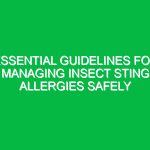“`html
Must-Know Inert Gas Safety Guidelines to Avoid Critical Hazards
Good morning team,
Today, we’re going to discuss a critical aspect of our Workplace Safety: Inert Gas Safety Guidelines. Understanding these guidelines is essential for ensuring our safety and health while working with inert gases. Inert gases are widely used in various industries, including manufacturing, food processing, and welding. However, improper handling can lead to serious hazards. Let’s dive into why it’s crucial to prioritize safety in these scenarios.
Understanding Inert Gas Safety
Inert gases are non-reactive gases, such as nitrogen, argon, and helium. They are often used to create an atmosphere that prevents combustion or chemical reactions. These gases are vital in processes like welding, food packaging, and chemical manufacturing. However, while inert gases are safe under controlled conditions, their use poses significant risks if not handled properly.
One common misconception is that inert gases are harmless. While they do not support combustion, they can displace oxygen and lead to asphyxiation in confined spaces. Understanding the characteristics of these gases and their potential hazards is crucial for maintaining a safe working Environment.
Key Hazards, Risks, and Safety Considerations
When working with inert gases, several hazards can arise:
- Asphyxiation: Inert gases can displace oxygen in the air, leading to suffocation. This risk is particularly high in confined spaces.
- Pressure Hazards: High-pressure gas cylinders can pose explosion risks if not handled correctly or if there are leaks.
- Frostbite: Some inert gases can be extremely cold; contact with skin can cause severe frostbite.
- Environmental Hazards: Leaks can lead to loss of product, affecting operational efficiency and potentially harming the environment.
Real-world consequences of ignoring these hazards can be severe, including injuries, fatalities, and significant financial losses due to accidents. It’s vital to approach inert gas safety with the utmost seriousness.
Best Practices, Procedures, & Actionable Advice
Here are some best practices to follow when working with inert gases:
1. Conduct Risk Assessments
Before starting any project involving inert gases, conduct a thorough risk assessment. Identify potential hazards and implement controls to mitigate risks. Consider factors such as:
- The type of inert gas being used
- The work environment
- The duration and scale of the project
2. Adequate Training
Ensure that all employees working with inert gases receive proper training. Training should cover:
- Characteristics and properties of the gases
- Emergency response Procedures
- Proper handling and storage techniques
3. Use Personal Protective Equipment (PPE)
Always wear appropriate PPE, including:
- Safety Goggles to protect your eyes
- Gloves to prevent skin contact
- Respirators in case of insufficient oxygen
4. Monitor Oxygen Levels
In areas where inert gases are used, install oxygen monitors to detect low oxygen levels. This is especially critical in confined spaces. Regularly test the air quality to ensure a safe working environment.
5. Proper Cylinder Handling and Storage
Store gas cylinders upright in a well-ventilated area, away from heat sources. Use appropriate cylinder carts for transport, and ensure that the cylinders are secured to prevent tipping.
6. Emergency Preparedness
Develop and communicate an emergency response plan for incidents involving inert gases. This plan should include Evacuation Procedures, emergency contact numbers, and first aid measures for exposures.
Let’s look at a real-world incident to illustrate the importance of these practices. In 2019, a worker suffered from asphyxiation due to a nitrogen leak in a confined space. Investigations revealed that there was no oxygen monitor in place, and the workers were not adequately trained on the dangers of nitrogen. This incident could have been prevented with strict adherence to safety protocols.
Regulations, Standards, and Compliance
Compliance with safety Regulations is not just a legal requirement but a moral obligation to protect our colleagues. Key regulations include:
- OSHA Standards: The Occupational Safety and Health Administration (osha) has specific guidelines for the safe handling of gases, including inert gases.
- ISO Standards: The International Organization for Standardization (ISO) provides standards for the safe use of gases in industrial applications.
- Company-Specific Policies: Adhere to our company’s safety policies and procedures regarding gas handling.
Compliance not only protects you but also creates a culture of safety that Benefits everyone in the workplace. When we all follow the rules, we minimize the risk of accidents and create a safer environment.
Employee Engagement & Discussion
Now, I’d like to open the floor for discussion. Here are a few questions to consider:
- What safety challenges have you encountered related to working with inert gases?
- Are there any additional safety practices you think we should implement?
- How can we improve our training methods to ensure everyone understands the risks involved?
Your feedback is invaluable in creating a safer workplace. Let’s share our experiences and learn from one another!
Conclusion & Key Takeaways
In conclusion, understanding and adhering to inert gas safety guidelines is vital to preventing critical hazards in our workplace. Remember:
- Conduct risk assessments before starting work.
- Ensure adequate training and use of PPE.
- Monitor oxygen levels and maintain proper cylinder handling.
- Be prepared for emergencies with a clear response plan.
Let’s commit to applying these practices every day. Thank you for your attention and your dedication to maintaining a safe working environment. Your safety is our top priority, and together we can ensure that everyone goes home safe.
“`


